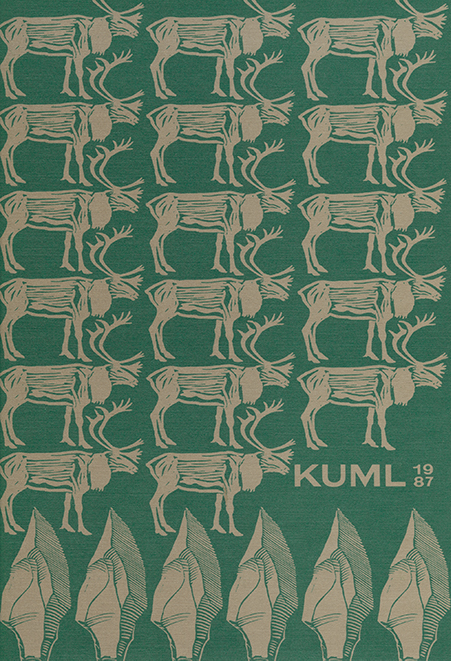Late Glacial settlement in Vendsyssel
DOI:
https://doi.org/10.7146/kuml.v35i35.110467Keywords:
Late glacial, settlement, vendsyssel, brommeAbstract
Late Glacial settlement in Vendsyssel
The number of Late Glacial finds in Vendsyssel have increased dramatically during the last decade, and the first settlements of this era have been recorded. The present article surveys the Late Glacial material from Vendsyssel (3), as of 1989.
The total find material consists of 12 single finds and 15 settlement finds. In the presentation, which consists entirely of surface finds, the main emphasis has been placed on an area of major activity, Hollendskær (7).
The single finds (figs. 1-3) comprise 10 tanged points and 2 striking weapons of reindeer antler. The tanged points can all be assigned to the Bromme culture (1 and 9), but the two strikers, which may be typologically attributed to the Ahrensburg culture's (27) group of strikers, are difficult to place chronologically, as such weapons have yet to be found in Denmark in datable context.
The settlements, which are all in an elevated position on moraine or Yoldia tracts close to wet areas, comprise 2 isolated settlements, Højvælde and Trudslev (fig. 1:2 & 6), and 13 settlements within a singe activity area (Hollendskær (fig. 1:1 and fig. 5). The two isolated settlelements, Højvælde (fig. 4:4-6) and Trudslev (fig. 4: 1-3), can both be referred to the Bromme culture. The Hollendskær settlements are scattered over an area measuring c. 200 X 700 m (fig. 5), along the west and south banks of a large tract of meadowland, which in prehistoric times was a freshwater lake covering about 0.5 sq. km. The lake had outlet via a narrow cleft to a large river valley, and the settlements lie on the north and south sides of this cleft.
The artefact material from the settlements of the activity area (figs. 6-20) -41 tanged points, 37 scrapers, 17 burins, 3 blade knives and 3 borers- can be generally referred to the Bromme culture, but a few typological elements point to an early date. The »keel retouched« blade knives (figs. 7:4, 9:4 and 16:5) have clear parallels in the inventory of the north German Federmesser group (16), and the scrapers with surface-retouched edges and long-edge retouch feature both in the Federmesser inventory and in Danish settlement inventory placed within the Hamburg culture (10) or the early part of the Bromme culture (11).
The Hollendskær settlements are interpreted as hunting stations, occupied seasonally by small social groups for a span of years.
They are the northernmost settlements of the northwest European plains from the Allerød period (fig. 22).
Torben Nilsson
Downloads
Published
How to Cite
Issue
Section
License
Fra og med årgang 2022 er artikler udgivet i Kuml med en licens fra Creative Commons (CC BY-NC-SA 4.0).
Alle tidligere årgange af tidsskriftet er ikke udgivet med en licens fra Creative Commons.


